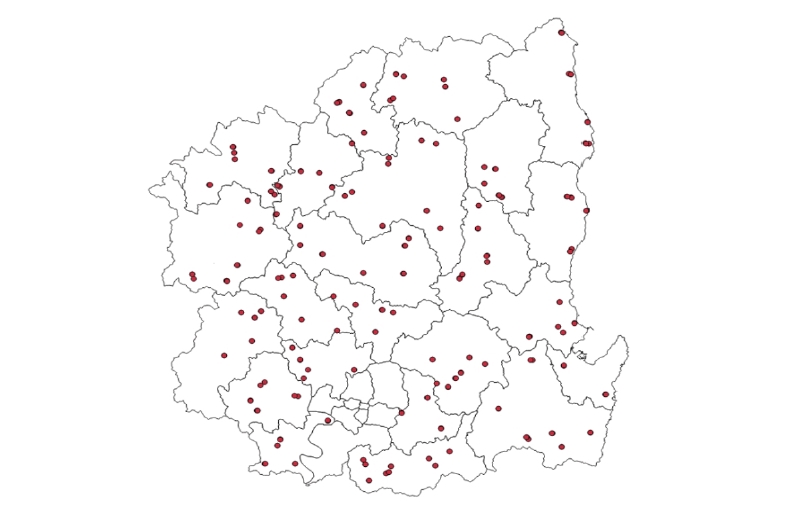Abstract
This study was conducted to investigate the occurrence and distribution of acetolactate synthase (ALS) inhibiting herbicide resistant weeds on paddy at 269 sites by soil sampling in Gyeongsangbuk-Do of Republic of Korea from November to April in 2017 and 2018. Pyriminobac-methyl and imazosulfuron were treated at 5 days after irrigation and herbicide resistant rate and occurrence area were estimated based on the number of survived weeds. The herbicide resistant rate and occurrence area were 39.7% and 39,555 ha, respectively, in Gyeongsangbuk-Do which was 2 to 2.5 times higher than those in 5 years ago. The herbicide resistant rate for Yeongju city and Cheongsong county was commonly highest at 66.7%, Cheongdo county was lowest at 5.6%. The herbicide resistant occurrence area for Sangju city had the largest at 6,090 ha, Cheongdo county was the lowest at 135 ha. The most dominant weed species was Monochoria vaginalis (26.9%), followed by
Figures & Tables

Fig. 1. Map of 269 soil collection sites in Gyeongsangbuk-Do.


